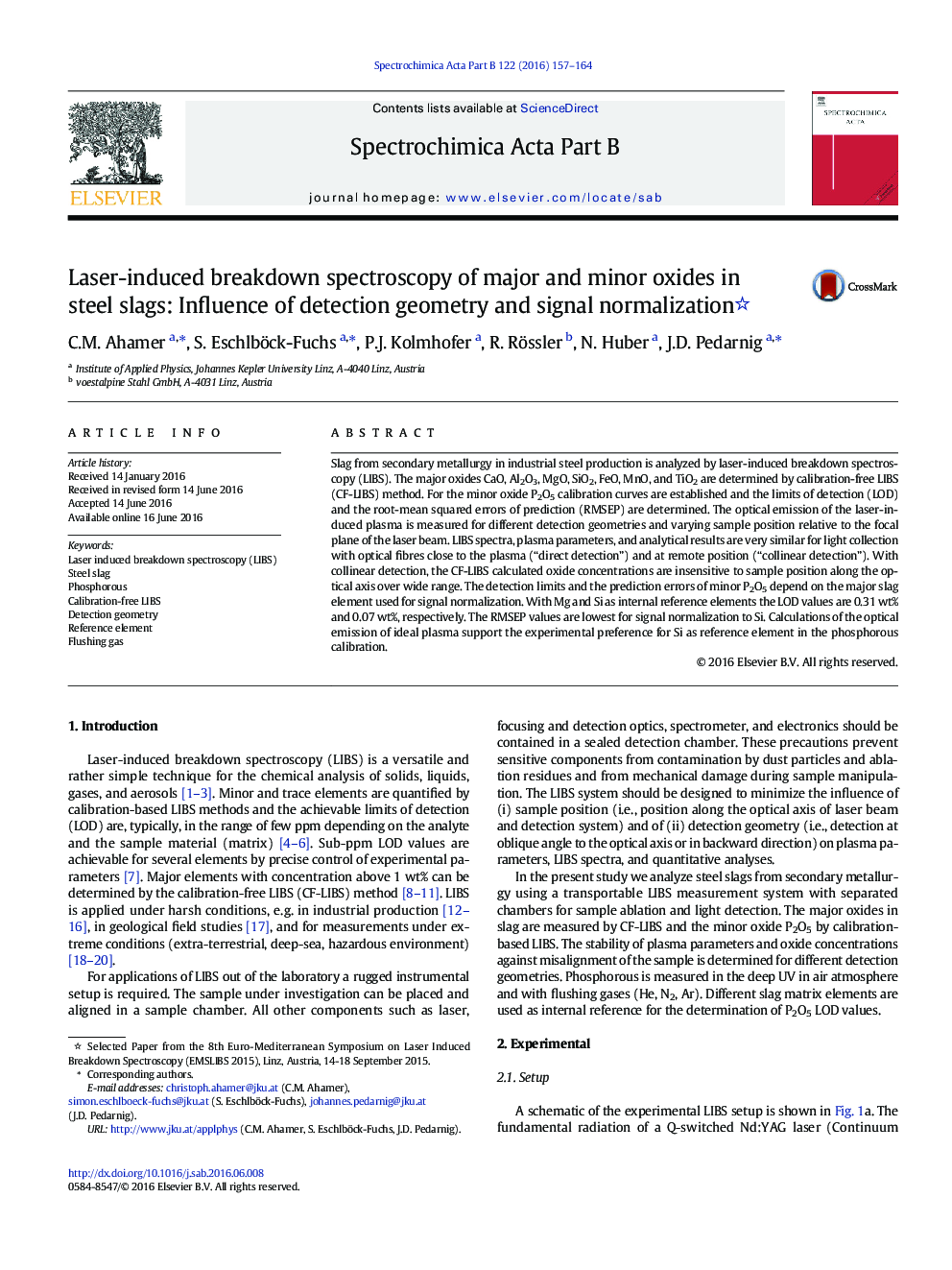| Article ID | Journal | Published Year | Pages | File Type |
|---|---|---|---|---|
| 1239565 | Spectrochimica Acta Part B: Atomic Spectroscopy | 2016 | 8 Pages |
•Major and minor oxides in slags measured by laser-induced breakdown spectroscopy•Spectra and major oxide concentrations similar for collinear and direct detection•Major oxide concentrations independent of sample position for collinear detection•Low detection limits for minor P2O5 using matrix element Si as internal reference•Emission of P and Si similar as calculated for ideal plasma
Slag from secondary metallurgy in industrial steel production is analyzed by laser-induced breakdown spectroscopy (LIBS). The major oxides CaO, Al2O3, MgO, SiO2, FeO, MnO, and TiO2 are determined by calibration-free LIBS (CF-LIBS) method. For the minor oxide P2O5 calibration curves are established and the limits of detection (LOD) and the root-mean squared errors of prediction (RMSEP) are determined. The optical emission of the laser-induced plasma is measured for different detection geometries and varying sample position relative to the focal plane of the laser beam. LIBS spectra, plasma parameters, and analytical results are very similar for light collection with optical fibres close to the plasma (“direct detection”) and at remote position (“collinear detection”). With collinear detection, the CF-LIBS calculated oxide concentrations are insensitive to sample position along the optical axis over wide range. The detection limits and the prediction errors of minor P2O5 depend on the major slag element used for signal normalization. With Mg and Si as internal reference elements the LOD values are 0.31 wt% and 0.07 wt%, respectively. The RMSEP values are lowest for signal normalization to Si. Calculations of the optical emission of ideal plasma support the experimental preference for Si as reference element in the phosphorous calibration.
